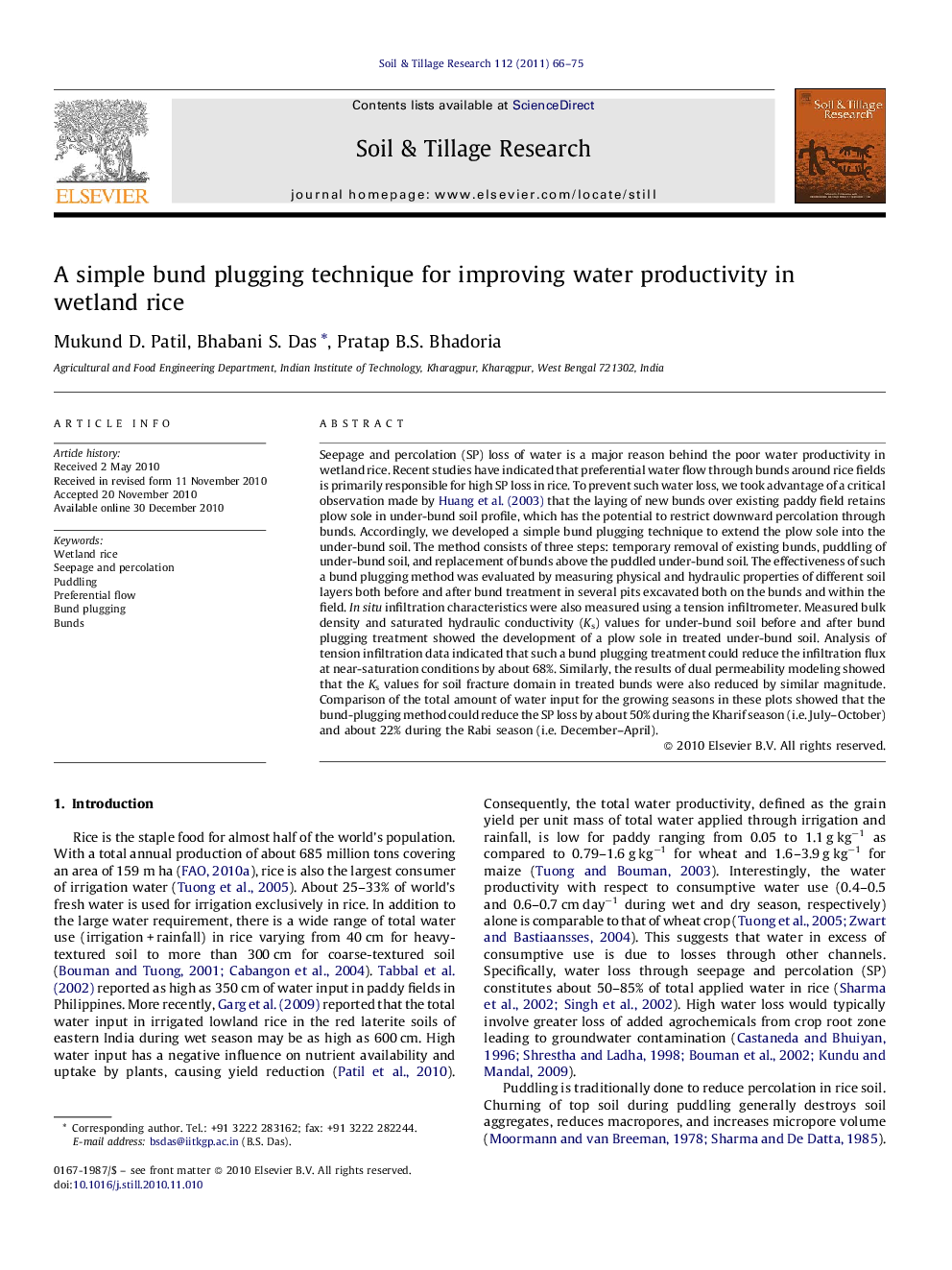| Article ID | Journal | Published Year | Pages | File Type |
|---|---|---|---|---|
| 306168 | Soil and Tillage Research | 2011 | 10 Pages |
Seepage and percolation (SP) loss of water is a major reason behind the poor water productivity in wetland rice. Recent studies have indicated that preferential water flow through bunds around rice fields is primarily responsible for high SP loss in rice. To prevent such water loss, we took advantage of a critical observation made by Huang et al. (2003) that the laying of new bunds over existing paddy field retains plow sole in under-bund soil profile, which has the potential to restrict downward percolation through bunds. Accordingly, we developed a simple bund plugging technique to extend the plow sole into the under-bund soil. The method consists of three steps: temporary removal of existing bunds, puddling of under-bund soil, and replacement of bunds above the puddled under-bund soil. The effectiveness of such a bund plugging method was evaluated by measuring physical and hydraulic properties of different soil layers both before and after bund treatment in several pits excavated both on the bunds and within the field. In situ infiltration characteristics were also measured using a tension infiltrometer. Measured bulk density and saturated hydraulic conductivity (Ks) values for under-bund soil before and after bund plugging treatment showed the development of a plow sole in treated under-bund soil. Analysis of tension infiltration data indicated that such a bund plugging treatment could reduce the infiltration flux at near-saturation conditions by about 68%. Similarly, the results of dual permeability modeling showed that the Ks values for soil fracture domain in treated bunds were also reduced by similar magnitude. Comparison of the total amount of water input for the growing seasons in these plots showed that the bund-plugging method could reduce the SP loss by about 50% during the Kharif season (i.e. July–October) and about 22% during the Rabi season (i.e. December–April).
Research highlights▶ Wide macropore network existed in undisturbed under-bund soil. ▶ Under-bund soil became more porous over three rice growing seasons. ▶ Bund-plugging treatment extended the plow sole into the bunds. ▶ Bund-plugging reduced the conductivity of macropore domain. ▶ Bund-plugging method could reduce the SP losses by about 50%.
